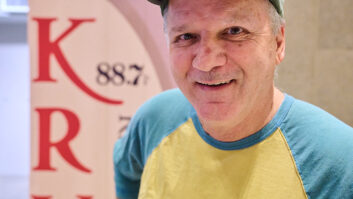Radio World asked Harold Price of Sage Alerting Systems to characterize the outcome of the national EAS test. Sage makes coder/decoder hardware; its equipment is used in many U.S. radio stations, so Price is particularly well positioned to summarize the experiences that broadcasters had Wednesday.
“Both good and bad occurred during the test,” Price told RW in an email.
“On the good side, many stations (the FCC will have a real number as soon as everyone submits their reports) received the EAN and put the alert on the air. There were some gaps in coverage as there will always be in a system of this type, and there is room for continued improvement.
“On the bad side, the audio received by most, possibly all, stations was flawed. This happened quite far up the relay chain. FEMA will report on exactly what happened and why.
“The end effect for receivers was that there were two copies of the EAN header. There is no definition in Part 11 on what to do in this case, and the various manufacturers’ equipment did slightly different things depending on if their device was able to decode the second set of headers, and how many of them were decoded. What many stations heard and relayed was a good start of the alert, and then either silence, or a mix of headers, attention tones and the alert script. Further down the relay chain, the alert that was relayed may have consisted only of a short period of silence.”
Based on reports from many sources, Price continued, most stations that started to relay the alert finished normally with their device sending the EOM on its own, sometimes after a short period of silence. “A small number of stations had to use the various manufacturers’ procedures to send an EOM manually, and a smaller number had to power cycle their equipment.”
On the whole, he said, the relay system for the headers worked. “That aspect of the test went well. Unfortunately, the audio relayed was bad, and this kept the system from delivering a clean, complete copy of the alert audio.”
Price feels that the system did capture the data necessary to correct the audio problem that occurred. “We learned enough about other issues to make improvements moving forward.”
“There were also problems at individual stations that had nothing to do with the nationwide audio problem. These were EAS devices that had improper settings, or where not actually hooked into the active transmitter.”
EAS consultant Gary Timm of the AWARE alerting forum echoed the “good and bad” theme.
“The test was delivered successfully to both the Primary Entry Point stations and via the National Public Radio Squawk Channel, a background channel used to supplement the feed of the over-the-air PEP stations,” he blogged. “Unfortunately most areas of the country reported there were issues with double audio being delivered, with a second EAS Header Code starting about 15 seconds into the alert and double audio continuing for the duration of the 30-second test. While some PEP stations reported the test sounded fine, other PEP stations sent the EAS Header Code but had no audio of the test in states such as Minnesota and Indiana, and other PEP stations such as the one in Utah never received the test.
“It was also reported that the system used for originating the test at FEMA had a clock that was apparently running 3 minutes fast, as the test was issued at 2 p.m. ET but the time stamp said it was issued at 2:03 p.m. ET,” Timm continued. “While it seems FEMA has some issues to iron out with the test origination, there were positive reports from many states across the country that received the test and forwarded it out to all stations in the state properly. So while the audio was less than desirable, it is encouraging to hear of many states that have a well-functioning State EAS Network which will be ready to relay a no doubt cleaner test the next time around.”












